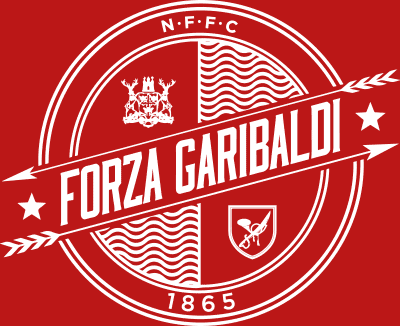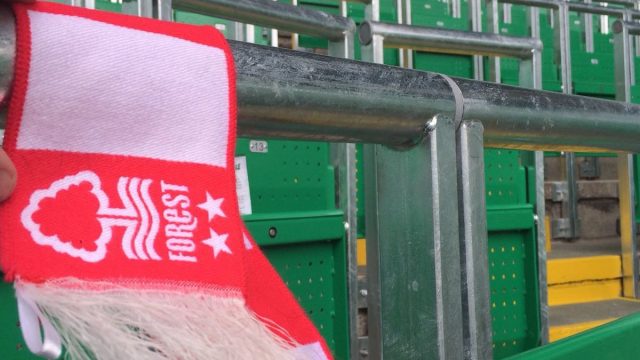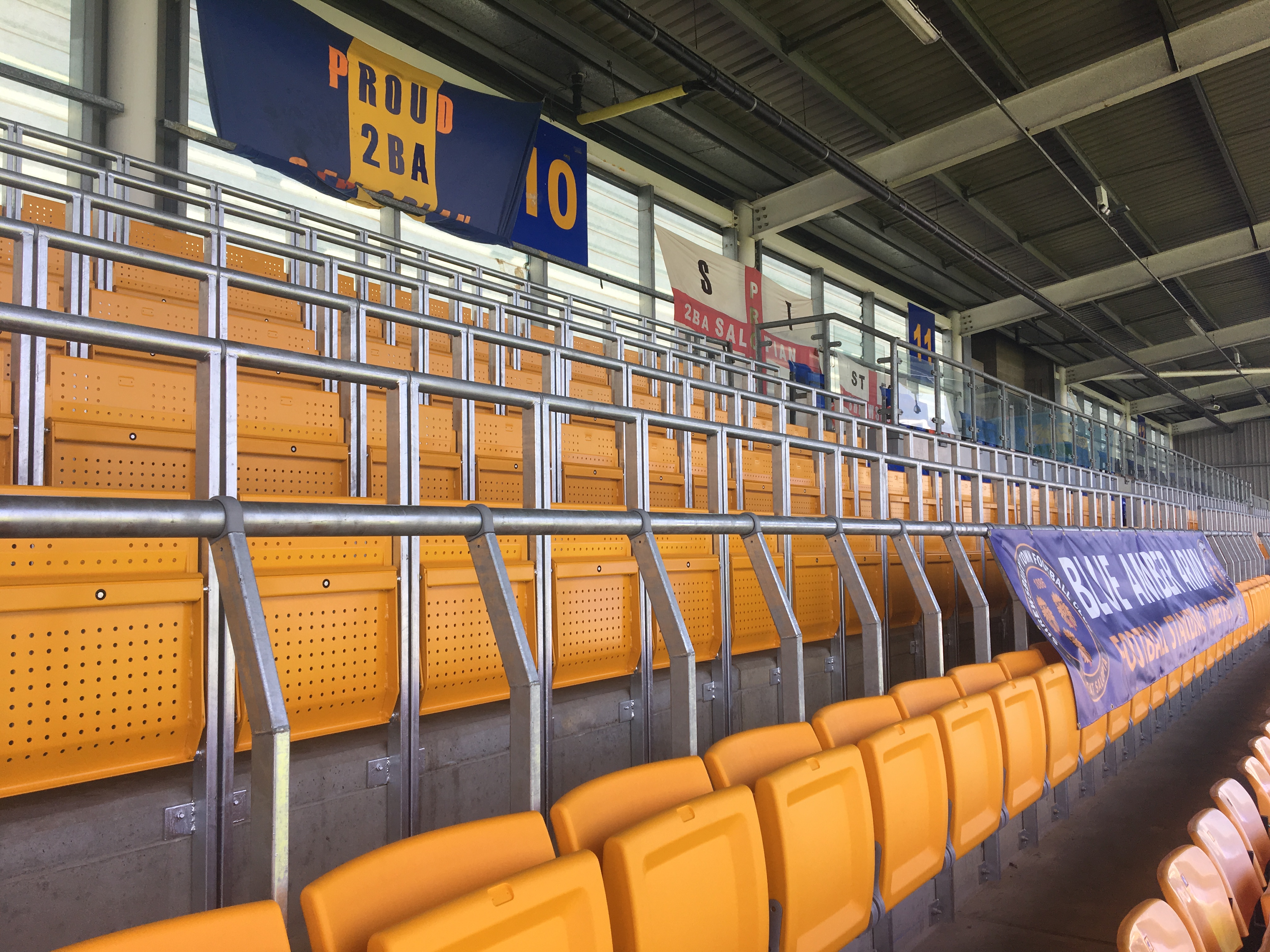Taking A Stand – The Campaign for Safe Standing
For a number of years the campaign to introduce safe standing into the top two levels of English football has rumbled on. An underlying current made up of a dedicated team of safe standing advocates has pushed it forward gradually but it is perhaps only in recent months that the call has really started to make an impact; both for the majority of football supporters and, crucially, members of parliament.
The defining moment occurred on 9th April this year when the Sports Minister, Tracey Crouch, rejected West Brom’s formal request for 3,600 seats in the Smethwick End to be replaced by a section of safe standing. In rejecting this bid Crouch labelled those in favour of safe standing a ‘vocal minority’.
The blue touch paper was lit.
Within two weeks a petition had amassed over one-hundred thousand signatures in support of safe-standing. Football fans had spoken. Interestingly, the petition was not a direct response to the rather unfortunate words from Crouch; it had actually been created previously and had amassed a few thousand signatures. It would appear that Ms Crouch’s comments were, ironically, the rallying cry that was needed.
Any petition that reaches the 100k mark will automatically be considered for a parliamentary debate. In the days that followed a date was confirmed for a hearing on 25th June.
For those who have campaigned over several years for its introduction, safe standing is now tantalisingly close. Nottinghamshire Labour MP, Alex Norris, recently invited us to meet him to discuss the merits of safe standing alongside other groups associated with Forest and Notts. Alex has been vocally in support of safe standing and has kindly provided a few words for this piece.
Two Forest fans will also have their say – Greg Mitchell, many of you will be aware, is part of Forza Garibaldi but his involvement in the safe standing campaign has been ever longer. We’ll also hear from Nigel Turner who has also has a prominent role in the call for safe standing and is a regular attendee at Bundesliga matches where standing areas are common place. Jon Punt of the Along Come Norwich website also provides his thoughts. The issue of standing became a particularly sore subject at Carrow Road in recent months.
The Fall and the Rise of Standing in English Football
The recent prominence of the debate is the latest stop on a long road for many individuals who have led the initiative, notably Jon Darch who has spearheaded it. Jon is an avid Bristol City fan and also retains a place on the board of their Supporters Trust. He has previously suggested football supporters are ‘demonised’ by current legislation introduced in the wake of the Taylor Report in 1990 which called for all seater stadia in England’s top two divisions.
The debate has always had a sensitive core following the tragedy at Hillsborough in April 1989 but that is something that has unfairly been used against those who desire a return to standing. There are Forest fans who are cautious or overtly negative about it because of what they witnessed that day and that viewpoint is perfectly understood. Yet it should be remembered the proposal here is significantly different to the terraces of old.
Nigel Turner describes the drive for safe standing as historically ‘slow moving but gathering in momentum’. The campaign, he says, has been running for twenty years with various obstacles challenging it in that time. A changing attitude of clubs has seemingly helped ease the path according to Nigel although he does also refer to a few still being ‘vehemently’ opposed. Many have now spoken in favour publically for the first time. One of these is Norwich City. Jon Punt explains:
‘Supporters group Barclay End Norwich originally tried to showcase rail seating a few years ago to then Chief Executive David McNally. It’s fair to say he wasn’t a fan. Unfortunately that day relations between the group and the club became fractured. Failed attempts at communication with McNally’s successor came and went, and it all felt a little hopeless.’
Jon, however, points to a drastically improved picture under current chairman Ed Balls:
‘We’re in a very different place right now. The arrival of Ed Balls as chairman wasn’t universally popular but he is hugely in favour of supporter choice. Our managing director has publically backed safe standing and envisages the club being at the forefront of the debate.’
In League One, Shrewsbury have pioneered the install of a section of safe standing which will be open for the beginning for the 2018/19 season (pictured). Until their recent loss at Wembley in the League One Play-Off Final there was a real possibility that they could be competing at a level which currently prohibits safe standing. Shrewsbury would have been granted a three year grace period. If they remained in the Championship for that period they would then have to convert that section back to seats barring a change in the law. It is worth noting that a prospective fixture for the Shrews in the Championship would have been a visit to West Brom who, as explained above, had their application rejected. A rather puzzling scenario I’m sure you’ll agree.
Alex Norris is the MP for North Notts and has had no qualms with pinning his rosette to the safe standing cause. Alex is a regular attendee at Manchester City and refers to the above example about Shrewsbury / West Brom as ‘ridiculous’. He continues: ‘(It) highlights how broken and unsustainable the current arrangements are.’ Safe standing is, Alex says, a subject that ‘matters’:
‘500,000 people a week go to a game in the top two flights. They ought to do so safely and to enjoy it fully. Giving choice to clubs and local authorities to make sure local arrangements promote this is simple and would be effective’.
Since we met Alex at the Vat & Fiddle pub in Nottingham at the end of May his wider party has now declared its support for the safe standing campaign. As part of the Labour Party’s decision they consulted with a number of fans at Parliament on 6th June. Around 40 fan groups, including ourselves, made the case for why we collectively felt standing should be returned to the highest divisions. 48 hours later the Shadow Sports Minister, Rosena Allin-Khan announced Labour’s support but, like Alex, indicated that she believed this was not necessarily a decision for the Government:
‘Clubs, fans and local authorities know their stadiums far better than anybody in Whitehall – the decision should rest with them’.
The glare of many is now on the Government. They can no longer deny this is a subject not worthy of discussion despite their best efforts to suggest all seating stadia is still in the best interests of fans. You’d hope they would take a glance at the feedback coming out of clubs, from numerous supporter groups and, in particular, from the results of a survey carried out by the EFL in May. The response of the 33k who participated showed 94% of fans in favour of standing and 47% stating it would encourage them to attend more games.
A vocal minority indeed.
What is Safe Standing?
A safe standing section will consist of barriers running the length of every row which will prevent the surges associated with an old styled terrace. The rail will sit at around waist height according to Greg but the number of fans accommodated varies between countries:
‘To take Celtic as our closest example, they currently have one person per section. However, in Germany they have a ratio of 3:1 and there’s still ample space. They can therefore offer cheaper tickets to everyone in that section due to the increased capacity.’
Each individual area will have its own seat and fans will have a space allocated (abroad they are often unreserved areas). This can be locked into place and will generally be numbered. It isn’t anticipated that in domestic competitions the seat would ever be unlocked and used but it is a requirement for certain non-domestic tournaments, hence the need for it.
Some, myself included, bemoan the lack of old fashioned terracing. Trips to Brentford and Burton are games I’ve relished that little bit more because of the terrace. Not all will agree I know but the sway and the compact nature is an environment in which I prefer to watch football. And the melee that accompanies goal celebrations as hundreds of us surge and stumble is thrilling. Is it dangerous? Possibly a little. But it’s no worse than being at the front of a gig – I’ve been trampled at plenty of those and no-one to my knowledge plans to change that. And nor would I want them to. The thrill of being there in that swirling, jumping and chaotic mix of people is a fundamental reason why I am there in the first place. And that rings true for football too.
The old type of terrace won’t be returning. The option of safe standing offers our only realistic option of legally standing at a football match in the Premier League or Championship.
A common misconception and a regular argument we’ve heard against safe standing is that fans are able to stand anyway so a specialist standing area is deemed pointless. Step forward once again Tracey Crouch who clarified her position in April:
‘The answer to dealing with persistent standing is not necessarily to introduce safe standing… There are regulations to deal with persistent standing – I would like to see them enforced.’
Norwich City supporters had first-hand experience of this recently where the row over standing escalated to the extent that the closure of sections in the Barclay End was threatened. The cause of this was complaints of children having to stand on seats to see the game. Thankfully this was resolved amicably.
You also don’t need to look too far to find someone who has been sent flying over rows of seats during a goal celebration. Almost everytime we get up and dust ourselves down without a care but it shouldn’t be overlooked. The argument that this is safer than a railed standing section is absurd.
By the letter of the law, standing throughout a game is not permitted at the upper levels of English football. We are generally allowed to do so via the common sense of football clubs and local authorities who tried and failed to enforce standing in the late nineties and first decade of this century. While unlikely, that could change. Especially when hearing comments from the Sports Minister like the one above.
Atmosphere
I’d argue that all seater stadiums have been a factor in declining atmospheres in English football grounds. Many of us continued to stand in seated areas but for many years there was running battles between fans and stewards who tried to enforce the law. Standing areas also offer a focal

point for noise to be generated. The two are not exclusively linked but there is, I would say, a correlation of sorts between those who want to sing and those who want to stand.
Indeed the involvement Greg had in the campaign for standing was a direct result of him savouring the atmosphere on the terraces at Peterborough while following Forest a few years ago. His initial research led him to a 2010 article in The Independent which noted the call from the Liberal Democrats in favour of standing:
‘Shortly afterwards I contacted the FSF (Football Supporters Federation) who put me in touch with Jon Darch. For many years he has tirelessly campaigned for an introduction to rail seating. We managed to get his roadshow to the City Ground to show fans what it is all about.’
Celtic has been the notable example of the success a standing area can have. Their Green Brigade fan group pushed for the safe standing section as their designated vocal area. Following the install of a relatively small area in the corner of Parkhead they have been able to improve the level of support significantly. Nigel also points to the success in Germany and a ‘much more vibrant’ matchday experience for supporters:
‘Standing is conducive to singing. In church you stand up to sing hymns, you don’t sit down’.
Greg believes that the ‘impact could be huge’ and adds that: ‘…atmospheres will naturally get better due to likeminded fans having their own standing area.’
There is also that long running issue we’ve all faced where you have the conflict between fans who want to sit and those who wish to stand. In the majority of circumstances all fans will co-exist but I’ve received a few taps on the shoulder at times. The situation is frustrating for all parties. Nobody wants a fellow fan to miss any of the game and will always look to oblige a request to help those behind see but it’s often futile considering an entire section will most likely be stood.
You can clearly see people at games, certainly away games, where they have been randomly assigned a ticket towards the back and they are hopelessly trying to see the pitch in amongst other standing fans. It’s a real shame and an issue which I think standing areas can help with. It’s perhaps harder at away games but designated standing areas would draw those who want to stand and leave those who want to sit in peace. It’s not as simple as that resolving the problem entirely but it would certainly help.
Safe Standing at NFFC
There remains no official line from the hierarchy at Forest. While a plethora of Premier League and Football League clubs have publically backed the campaign NFFC have remained silent. In our occasional correspondence with the club we have raised the subject but it is seemingly not a priority. It’s a stance, if correct, we can understand. The new board have faced many more pressing tasks in their maiden year. Yet we would hope that the growing strength of the cause and / or any green light would make this something Forest will be willing to act upon.
Fans at Forest have speculated about the vast potential that safe standing could bring. We have a ground which does not currently lend itself to atmosphere and there is no clear vocal area in the way that the old Trent End used to create the noise. The Lower Bridgford would seem to be a prime area for any development that incorporated a standing area but time will tell.
Certainly the demand is there from Forest fans. We voted heavily in the petition that forced the Parliamentary debate and our own recent survey shows an 83.38% approval for standing areas with 6.5% against and 10.12% unsure.
We should also take some pride in the Nottingham connection that has helped to power the safe standing campaign. It’s fantastic to hear about the significant role in its success that Greg and Nigel have played. Alex Norris MP has also dedicated time to support the cause and was present during the fans consultation at Parliament. While a few MP’s did attend it should be said that Alex was the one who remained throughout and listened to all the views.
Well done to all for taking something they are passionate about and doing what they can to help.
Summary
Originally, I wanted to try and make this more of a balanced piece, presenting both sides of the debate. Very quickly I abandoned that idea because I found it impossible to offer a case for standing and non-standing equally. I do not believe the argument is there for standing to remain outlawed at the top of English football.
Standing is widespread in the Premier League and Championship and attempts to stop it have failed. Thankfully we’ve moved on from the cat & mouse games with stewards in the A Block at Forest and elsewhere but an uneasy truce remains.
At the recent event we were invited to at Parliament a room full of football fans reeled off various reason why standing should be reintroduced. Continuously the discussions returned to a desire for choice. Football supporters want the option and it seems to have finally caught the imagination of the powers that be within football and Parliament. Nigel sees safe standing as ‘giving a choice back to football fans’ and I think that rings true with most. We don’t all necessarily want to stand but we would appreciate the option, for ourselves and for our fellow supporters that do.
The parliamentary debate on 25th June is a clear benchmark. Greg says that at this point ‘we’re closer than we have ever been’ and that it is only a matter of time until standing is available again. Alex Norris MP will be present in Parliament on this date and has requested a slot to speak in order to attempt to persuade his peers of the positives of safe standing.
What comes next is likely to depend on whether the Governement stand staunchly behind the original view of the Sports Minister Tracey Crouch or whether they take the time to actually focus on what football fans are asking for. While it would be a shame for this to become an overly politicised topic the recent support of Labour may finally push them into positive action.


